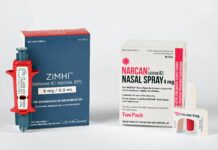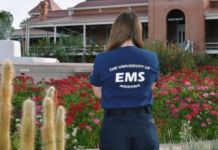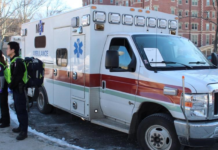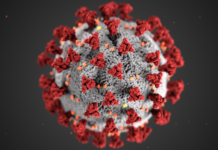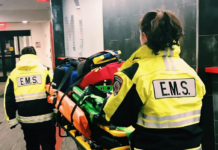Abstract
Treatment of hypoglycemic emergencies may present a unique challenge to collegiate-based emergency medical services providers due to variations in patient presentations and available management options. While hypoglycemia can occur in a variety of settings, it is most commonly a complication of the treatment of diabetes. As the prevalence of diabetes in the general population continues to increase, providers are more likely to encounter patients experiencing hypoglycemic emergencies, necessitating familiarity with relevant protocols and treatment. This review discusses the pathophysiology and presentation of hypoglycemic emergencies, as well as assessment and treatment options across different scopes of practice for emergency medical services providers. Additional recommendations are provided for collegiate-based agencies regarding training and prevention.
Introduction
Collegiate-based emergency medical services (CBEMS) providers must be vigilant in searching for potential causes of altered mental status in patients who appear to be intoxicated. Despite the high prevalence of alcohol usage in young adults, estimated at approximately 57% of those aged 18 to 25,1 hypoglycemia is one of the most common causes of altered mental status in the prehospital setting.2 It is most often a complication of medications used to treat diabetes mellitus (“diabetes”); hypoglycemia may also occur acutely in the setting of reduced food intake in non-diabetics, and other less common causes include alcohol consumption, critical illnesses such as organ failure or sepsis, hormone deficiency, nonislet cell tumors, and endogenous hyperinsulinism.3 Concern for hypoglycemic emergencies is increasingly relevant – the prevalence of diabetes continues to increase globally4 and, as of 2015, the prevalence of diabetes in the United States in the 18-44 age group is estimated at 2.6%.5
Type 1 diabetes mellitus (T1DM) results from the destruction of insulin-producing beta cells, which is typically immune-mediated, requiring patients to administer insulin subcutaneously via intermittent injection or insulin pump infusion in order to maintain normal blood sugar levels (euglycemia). These insulin doses are calculated by the patient or the device to accommodate the intake of carbohydrates. T1DM accounts for approximately 5-10% of diabetes cases across all age groups.5 While recent data is lacking, trends show that the incidence of T1DM in youth ages 0-19 is increasing.6 It is estimated that over 53,000 students with T1DM attend college in the United States.7
Type 2 diabetes mellitus (T2DM) is characterized by chronically elevated blood glucose levels and is thought to occur as a result of the interaction of genetic and lifestyle-related factors. It is primarily characterized by insulin resistance in various tissues, necessitating abnormally high insulin levels in order to maintain euglycemia, and T2DM may be further complicated by abnormal insulin secretion. T2DM can be managed by a wider variety of medications; primary treatment involves oral metformin therapy and lifestyle changes. These can be supplemented with other medications including insulin or insulin secretagogues, which increase insulin secretion from functional beta cells.8,9
Even with a history of good glycemic control, the process of adapting to a college environment presents unique challenges to the student with diabetes that can lead to an increased risk of hypoglycemia.7,10 In addition to changing daily routines, living away from home typically decreases the amount of diabetes management support and oversight provided by family members, who may be accustomed to frequently reminding the patient to check their blood sugar or asking about recent management trends.
The purpose of the current review is to discuss the pathophysiology and varied patient presentations of hypoglycemic emergencies, and to examine variations in the scope of practice of EMS providers when responding to hypoglycemic emergencies. We also explore the implications of assessment and treatment protocols for CBEMS providers and organizations. While recent hypoglycemia research has tended to focus on variations in treatment protocols for providers at the Intermediate Life Support (ILS) or Advanced Life Support (ALS) level, less than 13% of registered CBEMS agencies operate at these levels of service.11 We therefore place considerable attention on the critical role of Basic Life Support (BLS) providers and their expanding scope of practice for hypoglycemic emergencies. Since prehospital identification and treatment of severe hypoglycemia can improve patient outcomes and conserve healthcare resources by potentially reducing the need for transport to the emergency department,12 review of prehospital hypoglycemia management is worthy of attention.
National Model Guidelines
Recently, an increased focus has been placed on developing evidence or consensus-based guidelines and models in order to promote quality care and consistent practice in the EMS community on a national scale. In this review, we explore two such documents in reference to prehospital hypoglycemia management: the National Model EMS Clinical Guidelines13 and the National EMS Scope of Practice Model.14-16
The National Model EMS Clinical Guidelines are developed by the Medical Directors Council of the National Association of State EMS Officials (NASEMSO). The Guidelines – based on the best available evidence and expert consensus, in the absence of sufficient evidence – provide a standardized model set of guidelines for patient care that can be adapted for use by leadership at the state, regional, or local level. The first version of the Guidelines was released by NASEMSO in 2014, and the current version (Version 2.1) was released in 2017 and updated in 2018.13
The National EMS Scope of Practice Model is also prepared by NASEMSO based on the scientific literature and, as necessary, expert opinion. 16 The Practice Model is not a regulatory document but serves as a uniform model and resource to assist individual states in defining the scope of practice of EMS providers in each state – the legal limits of the duties and services that providers at each level (eg, Emergency Medical Technician (EMT) vs. Paramedic) may perform.16 The Practice Model was initially released in 2007,14 and revised to accommodate new evidence in order to create the 2018 National EMS Scope of Practice Model.16 As of January 2019, a pre-publication draft of the 2018 Practice Model is publicly available,16 but the document is only considered “in effect” once officially approved and published by the National Highway Traffic Safety Administration (NHTSA)17; however, in 2017, select revisions were incorporated into the 2007 Practice Model.15 Although the National Model EMS Clinical Guidelines and the National EMS Scope of Practice Model have been implemented to promote uniformity in practice, it is essential that providers refer to their State’s scope of practice regulations as well as state, regional, and local clinical protocols.
Clinical Definitions & Mechanisms
Hypoglycemia is defined as a blood glucose measurement below 70 mg/dL by the American Diabetes Association (ADA)9 and below 60 mg/dL in NASEMSO’s National Model EMS Clinical Guidelines.13 Severe hypoglycemia refers to a hypoglycemic event that a patient is unable to self-treat without assistance.18 A patient’s ability to detect the onset of a hypoglycemic episode by identifying the presence of symptoms, rather than obtaining a low blood glucose measurement, is referred to as hypoglycemic awareness. Impairment of this awareness – also referred to as hypoglycemia-associated autonomic failure8 – results from deficiencies in counter-regulatory mechanisms, thereby compromising a patient’s ability to identify and treat early hypoglycemia before it progresses to a severe episode.19
Glucose regulation is a complex process by which the body adjusts to variations in glucose supply and demand in order to maintain euglycemia, or normal blood sugar levels (Figure 1). In healthy individuals, endocrine tissue in the pancreas reacts to variations in blood glucose by adjusting secretion of the regulatory peptide hormones insulin and glucagon. Insulin, secreted by beta cells, decreases blood glucose levels by inducing cells in various tissues to increase their glucose uptake. Glucagon, secreted by alpha cells, works to increase the concentration of glucose in the blood by stimulating the liver to break down stored glycogen and activate gluconeogenesis, the process by which the body synthesizes glucose from organic molecules.
Hypoglycemia can occur in otherwise healthy individuals when this process is stressed by abnormal conditions, such as prolonged fasting or intense exercise, or in pathological states, such as diabetes. Treatment of diabetes with insulin or insulin secretagogues, such as sulfonylureas, are the most common causes of hypoglycemia.3 Over-administration of insulin can lead to rapid hypoglycemia and may occur, for example, when a patient overestimates the amount of carbohydrates in a meal or fails to eat as much as anticipated. Hypoglycemia often occurs during or shortly after exercise in patients treated with insulin, making unplanned exercise or strenuous physical activity a particular challenge for the patient with diabetes.3
The normal counter-regulatory response to hypoglycemia relies on decreased insulin secretion and activation of glucagon-producing alpha cells, as well as sympathoadrenal activation.3 This response is impaired in patients with T1DM. Even if the patient with T1DM recognizes hypoglycemia and halts or reduces insulin delivery, insulin already delivered will remain active in the body even as blood glucose levels continue to decrease. The ability of the pancreas to detect hypoglycemia and increase glucagon secretion is also impaired, thus compromising the pancreas’s ability to restore normal glucose levels by activating glycogen stores.20 Alcohol intake has been shown to further increase the risk of hypoglycemia, likely through impairment of gluconeogenesis, the counter-regulatory response, and hypoglycemia awareness.21
Clinical Presentation & Assessment
Although data on causes of altered mental status are mostly derived from emergency department data, a patient may present with altered mental status in the prehospital setting as a result of a neurologic, toxicologic, diabetic, or infectious condition.2 The National Model EMS Clinical Guidelines for hypoglycemia management apply when a patient meets one or more of the following inclusion criteria: altered mental status, stroke symptoms, seizure, appearance of intoxication, suspected pediatric alcohol ingestion, history of diabetes, or a blood glucose level less than 60 mg/dL.13
Patients and providers alike can confirm hypoglycemia with a blood glucose measurement, usually obtained from a fingerstick blood sample, using a portable glucometer. The 2007 National EMS Scope of Practice Model includes blood glucose monitoring within the scope of practice of Advanced EMTs (AEMTs) and higher,14 but the 2018 Practice Model includes the skill within the scope of practice of EMTs and higher.16 A study published in 2018 revealed that most states do allow EMTs to measure blood glucose.22 In the absence of a blood glucose reading, local EMS protocols may allow for treatment of presumed hypoglycemia based on the presence of clinical symptoms in a patient with diabetes treated with insulin.23
Providers should also be familiar with continuous glucose monitoring systems, which are implantable devices that allow patients with diabetes to obtain estimated blood glucose values as often as every few minutes. Implanted continuous monitors can provide useful information to patients about blood glucose trends. Between 2012 and 2017, continuous glucose monitor use rose from 7% to 28% across all age groups.24 EMS providers should expect to encounter these systems more frequently as their popularity grows and recognize that the estimated glucose values these devices generate should be confirmed with a fingerstick glucometer determination.
Early recognition and treatment are critical in preventing negative outcomes such as confusion, seizures, coma, or death. Specific signs and symptoms can be categorized as neuroglycopenic, caused by glucose deprivation in the brain, or autonomic, triggered by sympathoadrenal activation (Table 1).8,25
Table 1. Common signs and symptoms of hypoglycemia.8,25
The signs and symptoms are not exclusive to hypoglycemia, demanding that EMS providers carefully consider alternate correctable causes of the patient’s condition. In particular, a patient with alcohol or other drug intoxication, head injury, infection, stroke, seizure, or mental illness may also present with altered mental status and other comparable signs and symptoms.2 Individual experiences of hypoglycemia vary by patient, such that the appearance of certain symptoms or degrees of altered mental status do not universally appear at defined blood glucose levels.18 In addition to blood glucose monitoring, patient assessments should include a secondary survey of findings pertinent to hypoglycemia, including the presence of an insulin pump, tachycardia and hypotension, sunken eyes and dry mucus membranes from dehydration, or tongue bite from seizure. Neurological assessment should include Glasgow Coma Score (GCS), mental status, and focal motor or sensory deficits.13
Guidelines for Treatment
For a patient confirmed to be hypoglycemic, several options for prehospital treatment exist: oral glucose, intravenous (IV) or intraosseous (IO) dextrose, and intramuscular (IM) or intranasal (IN) glucagon. Despite treatment recommendations being based on the National Model EMS Clinical Guidelines,13 readers should always consult local protocols and medical direction.
Oral Glucose
When the patient is conscious and capable of protecting their airway, oral glucose administration is often the most appropriate treatment for hypoglycemia. Certain state or local protocols may also permit the administration of small amounts of oral glucose between the cheeks and gums of a patient who cannot swallow but who has an intact gag reflex.26 Both the 2007 and 2018 National EMS Scope of Practice Models include administration of oral glucose within the scope of practice of EMTs and higher.14,16 The National Model EMS Clinical Guidelines recommend administration of 25 g to adults and 0.5-1 g/kg to pediatric patients when blood glucose is less than 60 mg/dL.13 Administration of oral glucose can be repeated if hypoglycemia persists.8 ADA treatment guidelines for patients with diabetes recommend administration of 15-20 g of oral glucose when blood glucose is <70 mg/dL,9 which is equivalent to approximately 8 ounces of orange juice. EMS agencies commonly utilize prepackaged doses of glucose gel due to its ease of administration, extended shelf life, and cost of only a few dollars; glucose tablets or sugary foods such as cake icing may also be used.13
Dextrose
In situations where oral administration is contraindicated, intravenous (IV) dextrose (D-glucose) solutions and, per local protocols, intraosseous (IO) dextrose are alternative treatment options for increasing blood glucose levels. While these methods of delivery are fast-acting, difficulties in establishing access due to complex presentation (eg, reduced IV access in the setting of dehydration) or provider inexperience may delay treatment. Both the 2007 and 2018 National EMS Scope of Practice Models include establishment of IV or IO access within the scope of practice of AEMTs and Paramedics.16 Dextrose should be administered in incremental doses until patient mental status improves with a maximum dose of 25 g for adults and 0.5-1 g/kg for pediatrics. Since most collegiate-based EMS agencies operate at the BLS level,11 dextrose is not commonly utilized in this setting.
Further variations in local protocols and usage exist regarding the strength of dextrose solution indicated. In a 2016 survey of protocols from EMS agencies across the United States, 70% of protocols specified 50% dextrose (D50) solution in adult hypoglycemic patients, 8% specified 10% dextrose solution (D10), and the remaining 22% of protocols permitted the use of either.27 The National Model EMS Clinical Guidelines suggest that a concentration of no more than 25% be used in children less than 8 years old, and no more than 12.5% in neonates and infants less than 1 month old.13 D10 solution is becoming more commonly used due to its lower risk of tissue necrosis should extravasation occur, diminished risk of hyperglycemia due to overcorrection of hypoglycemia, and lower cost relative to D50.2 Recent observational cohort studies of patients receiving D1028,29 and a randomized controlled trial comparing D10 and D5030 have demonstrated that D10 administration is safe and effective for adults. Although data is limited, in the randomized controlled trial there were no significant differences between median post-treatment GCS, time to recovery, or the proportion of patients experiencing another hypoglycemic episode within 24 hours of treatment.30 Using D10 exclusively also eliminates the need to dilute D50 for use in pediatric patients in order to prepare a solution with lower risk of vascular injury.8 This may be particularly advantageous for CBEMS providers who may have less familiarity with pediatric protocols and dilution calculations.
Glucagon
In the absence of venous access, including the inability to obtain it due to limited scope of practice, most agency protocols allow for usage of intramuscular (IM) glucagon to treat hypoglycemia.27 Nausea and vomiting have been reported as side effects, but the risk is small and may occur due to hypoglycemia regardless of glucagon administration.18 The National Model EMS Clinical Guidelines recommend a dose of 1 mg for adults and pediatric patients who weigh at least 20 kg (or greater than 5 years of age), and 0.5 mg for those under 20 kg (or less than 5 years of age).13 ADA treatment guidelines for patients with diabetes recommend that all persons at risk for severe hypoglycemia should be prescribed IM glucagon, and that caregivers or family members should know how to administer it.9 As such, EMS providers may find that the patient’s own prescribed glucagon is present on scene and local protocols may allow use of the patient’s own medication.
Glucagon releases glucose from internal stores of glycogen but does not provide an external supply of glucose as oral or hypertonic glucose do. This reduces its effectiveness in patients who have depleted their glycogen stores during a recent period of alcohol consumption, fasting, or low carbohydrate intake, as well as in malnourished patients or frequent users of alcohol.21,31-33 Hypoglycemic patients treated with glucagon will usually require transport to and additional evaluation in the emergency department or appropriate medical facility. While administration of IV glucose has been shown to lead to faster recovery from hypoglycemia, utilizing IM glucagon instead may cause a more stable rise in blood sugar.32,34
As per both the 2007 and 2018 National EMS Scope of Practice Models, the IM route of medication administration is only within the scope of practice of AEMTs and Paramedics.16 Although IM glucagon is typically administered via a glucagon kit that contains a syringe and vial,35 intranasal (IN)36 and auto-injector IM37 formulations for glucagon have undergone phase 3 clinical trails –as of 2017, unit dose, premeasured, IN or auto-injector IM medications are also within the scope of practice of EMTs and even emergency medical responders (EMRs).15,16
According to a study published in 2018, that includes data obtained from state EMS offices, only 8 states allow EMTs to administer glucagon.22 As a point-of-comparison, a 2017 study found that 13 states allow EMTs to administer IM epinephrine via syringe epinephrine kits instead of epinephrine auto-injectors.38 Expansion of state protocols regarding glucagon administration and future commercial availability of novel auto-injector and IN glucagon administration devices may allow for more widespread administration of glucagon in the prehospital setting. However, additional training would be necessary to ensure that glucagon is administered safely and effectively by EMTs or EMRs. The cost of glucagon also needs to be considered when evaluating options for increasing access to glucagon, particularly in the collegiate setting. At an average cost of $212 per 1 mg dose22 and shelf life of 24 months from the date of manufacture,35 stocking glucagon can significantly impact an EMS agency’s finances, and novel auto-injector or IN devices may be expensive.
Reassessment & Transport
After treatment has been administered, reassessment of the patient’s vital signs and mental status is essential. National clinical guidelines suggest that repeat blood glucose monitoring should be performed if hypoglycemia and altered mental status persist but is not needed if mental status has returned to normal. If a maximal field dosage of dextrose solution has been administered and the patient does not achieve normal blood glucose levels and mental status, transport to an appropriate facility should be initiated while alternative causes of altered mental status are investigated.13
A recently published study, relying on 2013 data from the National EMS Information System (NEMSIS) and additional national surveys, found that approximately 20% of patients who are treated for hypoglycemia in the prehospital setting are not transported from the scene.12 Although recent data is lacking, several studies suggest that non-transport can be safe, particularly in the context of structured “treat and release” protocols.39-43 The National Model of EMS Clinical Guidelines states that if hypoglycemia resolves after treatment, release without transport may be considered if all eight conditions are met (Table 2).13 Providers should follow relevant protocols to facilitate the transfer of patients to higher levels of care when needed, including in cases of hypoglycemia that fail to respond to treatment.
Continued research may further identify patients who may have poor outcomes without transport to the emergency department. Further research is also needed to determine whether college students with diabetes are at a greater short term risk for repeat episodes of severe hypoglycemia after prehospital treatment without transport.
Conclusions
CBEMS providers may be likely to encounter hypoglycemic emergencies and must be knowledgeable of assessment strategies and appropriate treatment options. Hypoglycemia presents an opportunity where early identification and treatment can lead to a relatively rapid reversal of symptoms and prevention of negative and fatal outcomes. Furthermore, the expansion of the EMT scope of practice to include blood glucose measurement and, variably, IM glucagon administration increases the resources available to providers for managing these scenarios. Implementing protocols based on evidence-based national guidelines, when available, promotes greater quality and consistency between EMS organizations.
Collegiate EMS supervisors, training officers, and scholars can also promote prevention and quality management of hypoglycemic emergencies through the development of novel trainings, public health initiatives, and research projects. We recommend that collegiate EMS agencies participate in training scenarios involving cases of altered mental status that include hypoglycemia, and practice with in-service glucometer models when included in protocols. Agencies could also participate in public health outreach by working with campus health services to promote awareness and to increase the number of students wearing identification bracelets for medical conditions, especially T1DM. Further research is also needed to establish the prevalence of T1DM and T2DM in collegiate populations, as well as the frequency of hypoglycemic emergencies encountered by CBEMS agencies.

